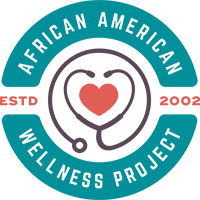How to Tell Upper Airway Allergy from Infection
Distinguishing between upper airway allergies and infections can be tricky—they share overlapping symptoms like congestion and runny nose. Yet, the underlying causes are very different: allergies stem from immune overreaction to harmless triggers (like pollen or dust), while infections result from viruses or bacteria. Recognizing the differences is crucial for choosing the right treatment and avoiding unnecessary antibiotics.
Onset
-
Allergy: Symptoms appear suddenly, often after exposure to allergens such as pollen, dust, or pets. Many patients notice seasonal patterns.
-
Infection: Typically develops more gradually over 1–3 days following viral exposure.
Duration
-
Allergy: Persists for weeks or even months if exposure continues.
-
Infection: Self-limited, resolving within 7–10 days.
Nasal Discharge
-
Allergy: Clear, watery, and thin.
-
Infection: Initially watery, but becomes thicker or mucoid, often yellow-green.
Associated Symptoms
-
Allergy:
-
Intense itch (nose, eyes, throat)
-
Frequent paroxysmal sneezing
-
Red, watery, itchy eyes (allergic conjunctivitis)
-
-
Infection:
-
Sore throat and cough
-
Malaise, fatigue, sometimes fever
-
Muscle aches (especially with viral URIs)
-
Physical Exam Findings
-
Allergy:
-
Pale, boggy nasal turbinates
-
Clear watery rhinorrhea
-
“Allergic shiners” (dark circles under eyes)
-
Dennie-Morgan lines (folds under lower eyelids)
-
-
Infection:
-
Erythematous nasal mucosa
-
Thick secretions
-
Pharyngeal redness with or without exudate
-
Tender cervical lymph nodes
-
Systemic Clues
-
Allergy: No fever.
-
Infection: Fever may occur, especially early in the course.
Practical Quick Clues
-
Itch = Allergy (especially eyes & nose)
-
Fever = Infection (rare in allergy)
-
Duration: Symptoms >2 weeks without improvement suggest allergy.
-
Pattern: Seasonal recurrence or family history of atopy favors allergy.
Tests (When Needed)
-
Allergy: Skin prick test, serum IgE, nasal eosinophils.
-
Infection: Usually clinical; consider throat swab/culture if streptococcal pharyngitis is suspected.
Bottom Line
-
Allergy: Itchy, sneezy, clear runny nose, no fever, often seasonal or persistent.
-
Infection: Fatigue, sore throat, thicker nasal discharge, fever sometimes present, resolves within 7–10 days.
Recognizing these distinctions helps patients avoid unnecessary antibiotics, identify when allergies are at play, and seek targeted care.

